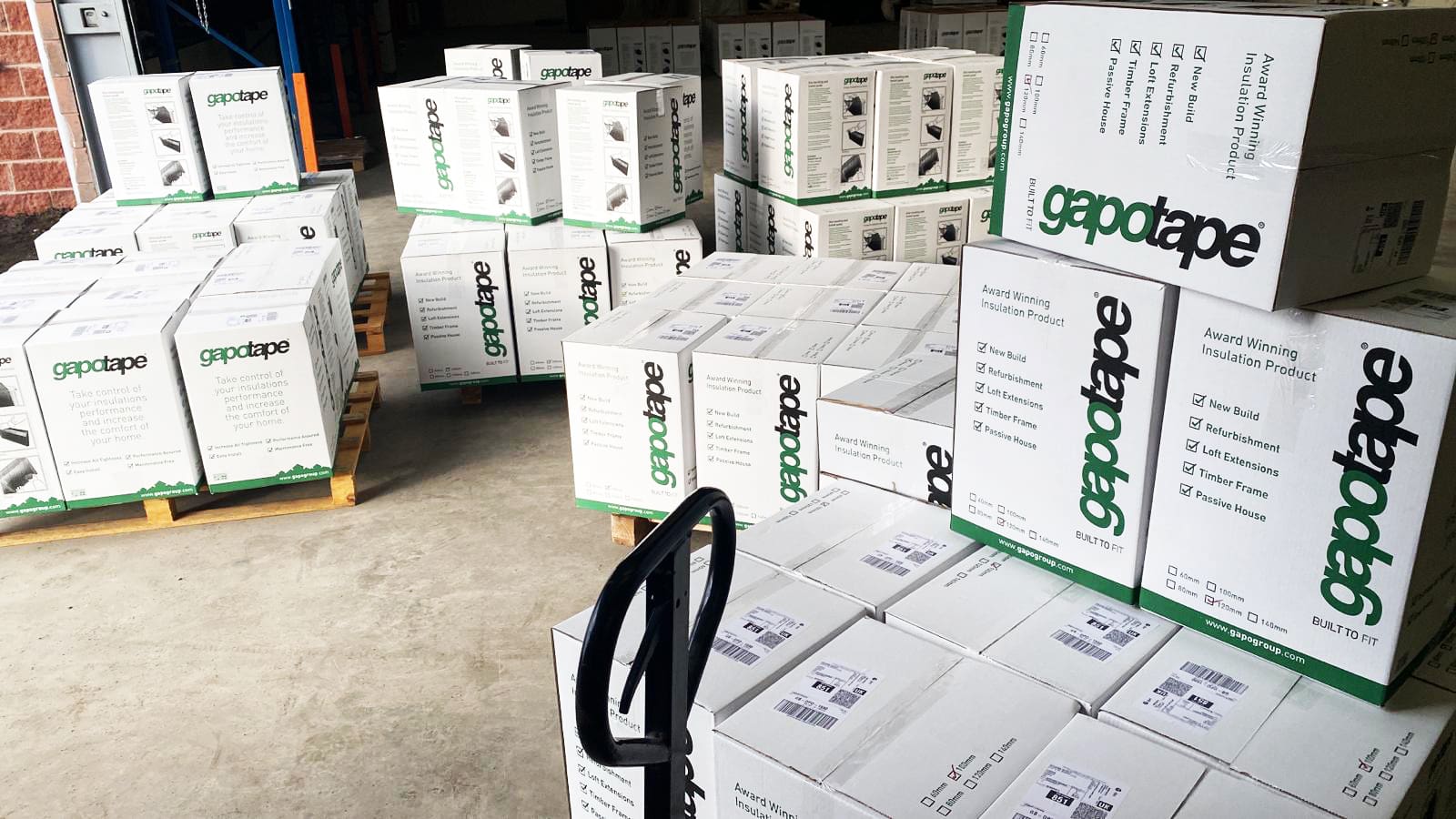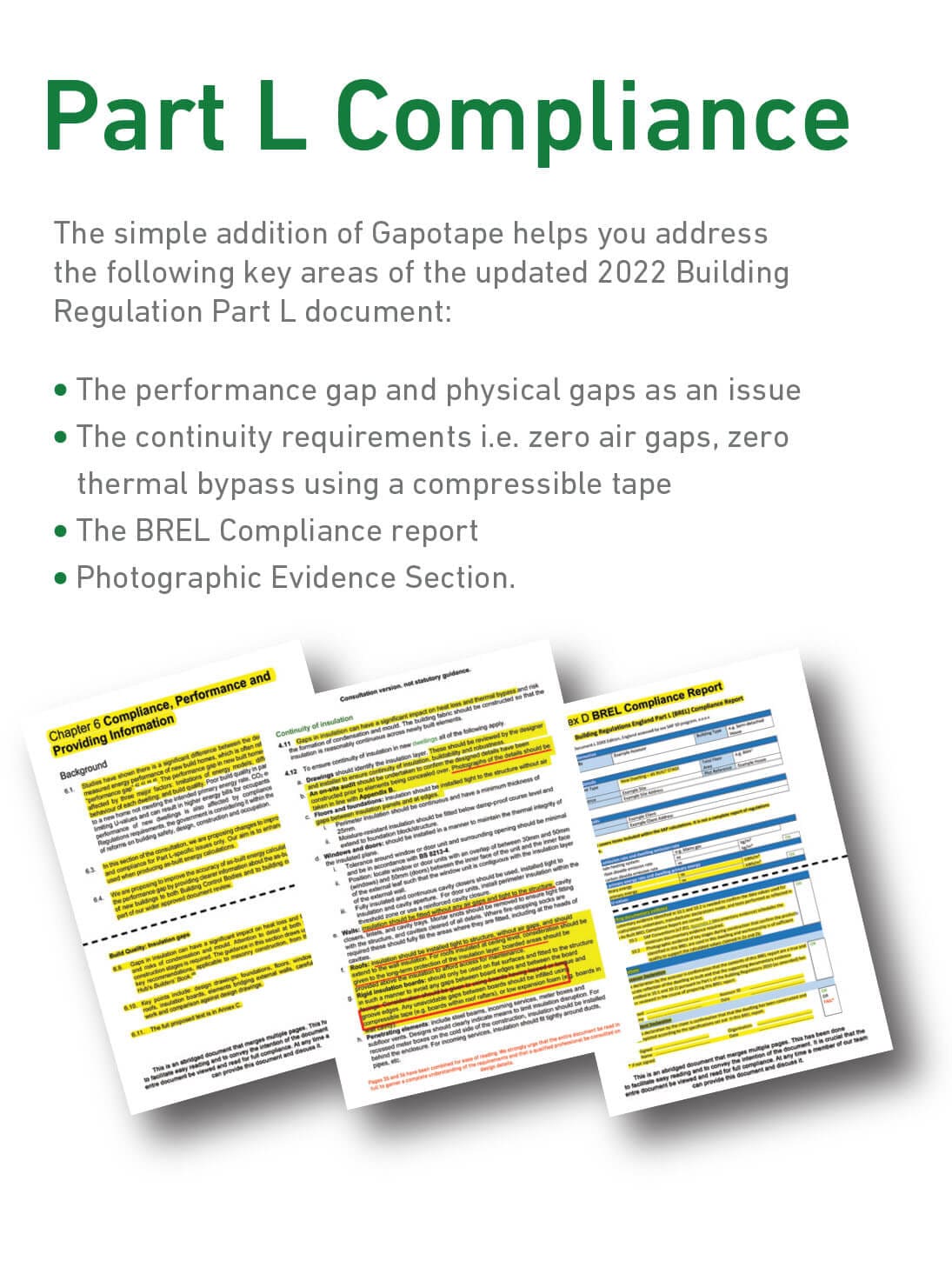
Resources
Our learning hub serves as a space where knowledge meets innovation. Discover insightful resources, guides, and educational content to enhance your understanding of Gapotape and revolutionize your approach to insulation solutions.
NPL Report
Explore the detailed National Physics Laboratory (NPL) report validating Gapotape's performance and efficacy in insulation.
BBA Report
Access the British Board of Agrément (BBA) report certifying Gapotape's compliance and reliability in insulation solutions.

Part L Regulations
Understand how Gapotape aligns with and exceeds Part L Building Regulations, ensuring energy efficiency and compliance in construction projects.
CPD Video
Watch our comprehensive CPD video to learn about Gapotape's innovative technology, installation benefits, and its impact on energy performance.

Schedule Your Gapotape CPD Session Today
Schedule a CPD session with us to gain deeper insights into Gapotape's applications, benefits, and contributions to sustainable building practices.
Frequently Asked Questions
If you haven't found the answer you're looking for here, please don't hesitate to contact us.
Gapotape is used for sealing gaps, joints, and seams on foil faced rigid insulation. It provides an airtight, thermal seal, preventing thermal bypass. Helping you to achieve continuity of insulation and to prevent the performance gap in this area.
The performance gap in buildings' energy usage refers to the discrepancy between the predicted or expected energy consumption, based on design models and simulations, and the actual energy consumption observed once the building is in use. This gap can have significant implications for energy efficiency, operational costs, and environmental impact.
Per “The Future Homes Standard: changes to Part L and Part F of the Building Regulations for new dwellings” consultation, insulation gaps in particular have been highlighted as being severely detrimental in regard to the performance gap:
“Build Quality: Insulation gaps
- 6.9. Gaps in insulation can have a significant impact on heat loss and thermal bypass, and risks of condensation and mould. Attention to detail at both the design and construction stages is required. The guidance in this section draws upon some of the key recommendations, applicable to masonry construction, from the Zero Carbon Hub's Builders' Book.46”
To apply Gapotape, clean and dry the surface to ensure maximum adhesion. The surface must be clean from all dirt and dust potentially caused by the cutting of the insulation. Critically the board must also be clean from any unwanted surface agents that may have adhered during manufacture, packaging or transportation as they may impact adhesion. Then simply unroll the Gapotape, peel your wing, press it firmly onto the surface edges, and smooth it out to eliminate any air bubbles or wrinkles.
In this situation the board is cut at the angle that matches the end installation. When cutting the board at an angle to match the end installation, the width of the edge will change. For instance, a 100mm wide board might have an edge width ranging between 120mm to 140mm after being cut at an angle. In this case, you would use the corresponding Gapotape. The angled cut is Gapotaped with GT10-140, and the remaining edges are Gapotaped with GT10-100.
No special tools are required to apply Gapotape. A utility knife or scissors can be used to cut the tape to the desired length, and a roller can help ensure a smooth application.
Gapotape is designed for long-lasting performance. When applied correctly, it can provide durable sealing for many years, continually expanding and contracting to match the natural changes in the rafters or studs around it.
Gapotape can be purchased from online store and of course from a variety of distributors, feel free to send an email to info@gapotape.com and we can help you work out the best way to get your Gapotape!